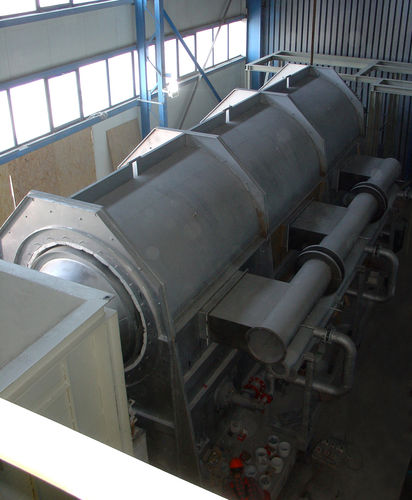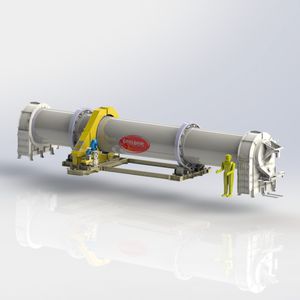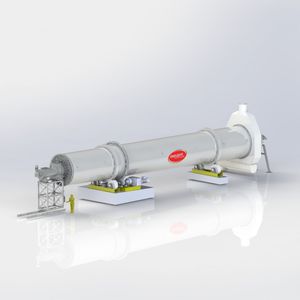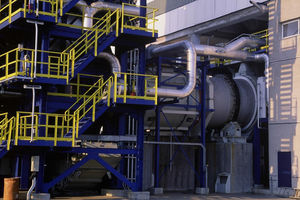
Calcination kiln industrialplaster

Add to favorites
Compare this product
Characteristics
- Function
- calcination
- Other characteristics
- industrial, plaster
Description
The calcination unit is the heart of the process. GRELBEX Technologies offers different technologies to meet your requirements:
- For all your kinds of plasters, GRELBEX Technologies recommends its Four Marmite GRELBEX FMG MULTIPLASTERS GRELBEX with indirect contact operating by batch or its kiln with direct contact.
For the FMG kiln, the heating is carried out by burners. The fumes circulate in the space between the rotary drum and the fixed surrounding wall. The heat is transmitted to the product through radiation of the drum wall by convection and by conduction. The plaster constituted essentially of semi-hydrate calcium sulfate [CaSO4. ½ H2O] is obtained by gypsum partial dehydration at a calcination temperature between 150 to 190°C to eliminate up to 16 % of water.
For the kiln with direct contact, the operation is provided with the same gypsum particle size as this of the FMG Multiplasters Kiln (0 - 300 mm). The gypsum is dehydrated to a temperature of 550°C. The production capacity of overcalcined plaster is 70 tons / day.
- For high-end alpha plaster for medical and industrial applications, the autoclave kiln is a calciner under pressure.
- For beta plaster intended to prefabrication and construction plasters industry, GRELBEX Technologies recommends its CYCLONE kiln.
Catalogs
No catalogs are available for this product.
See all of GRELBEX‘s catalogsRelated Searches
- Furnace
- Chamber furnace
- Drying system
- Combustion furnace
- In-line dryer
- Baking oven
- Industrial furnace
- Air blast drying system
- Drying system for the food industry
- Batch dewatering system
- Hot air drying system
- Centrifugal dewatering system
- Drying system for the chemical industry
- Dryer for the pharmaceutical industry
- Horizontal drying system
- Rotary furnace
- Laboratory drying system
- Rotary drum drying system
- Dehumidifying drying system
- Calcination furnace
*Prices are pre-tax. They exclude delivery charges and customs duties and do not include additional charges for installation or activation options. Prices are indicative only and may vary by country, with changes to the cost of raw materials and exchange rates.








